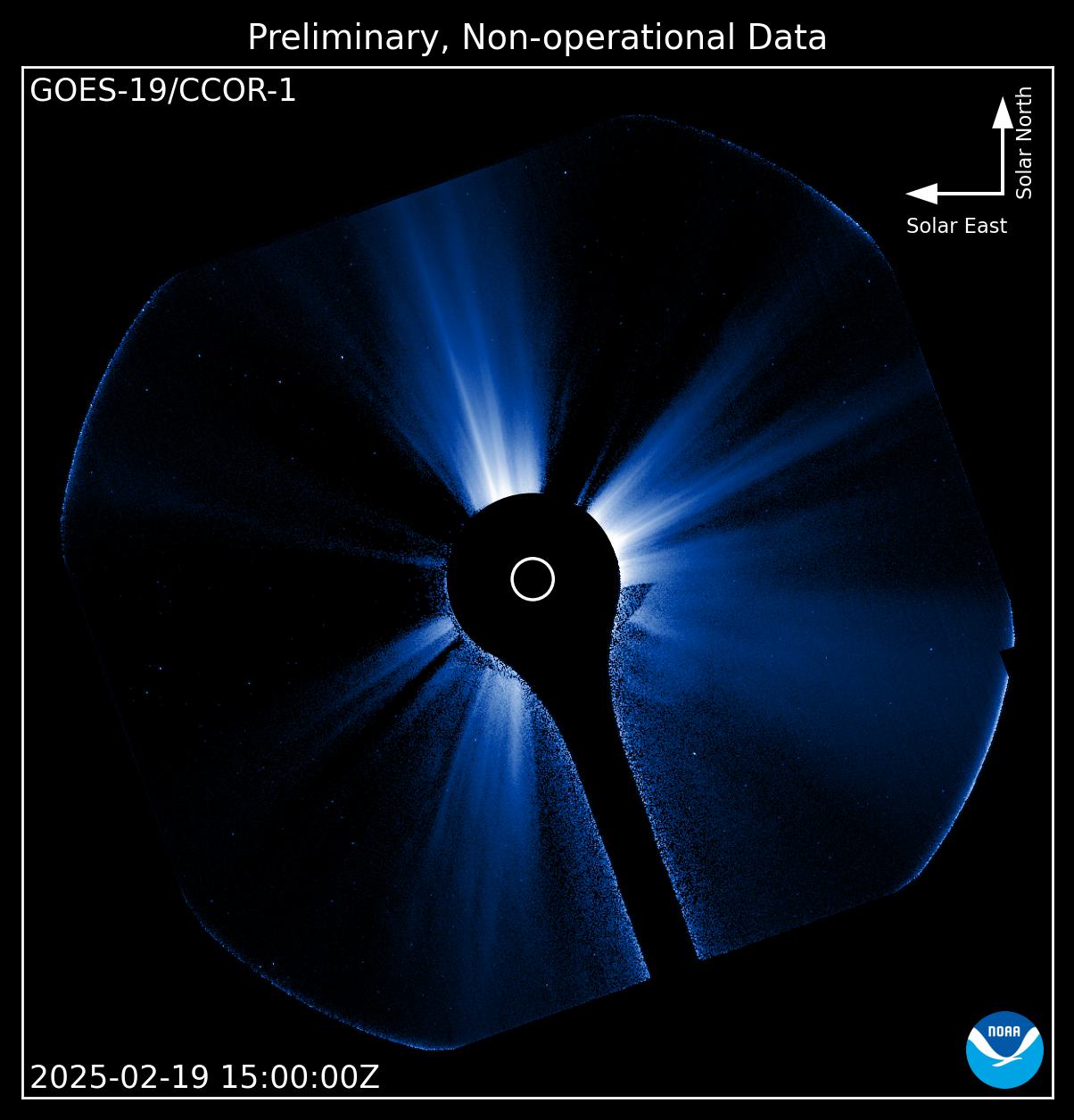
Usage
NOTE: Until such time as GOES-19 becomes operational, currently planned for April 4th, the animations and data are to be considered “preliminary and non-operational.”
Imagery from the Compact Coronagraph (CCOR) instruments is used by the SWPC Forecast Office to characterize activity in the outermost part of the Sun’s atmosphere known as the corona. This includes monitoring data for transient events like coronal mass ejections (CMEs), as well as monitoring the impacts the corona has on the steady stream of plasma, referred to as the solar wind, emanating from the Sun. Ultimately, information derived from CCOR images will be used as inputs to the WSA-Enlil model to forecast the impacts of CMEs and the solar wind on Earth.
Impacts
Space Weather Impacts On Climate
Details
The Compact Coronagraph-1 (CCOR-1), will image the Sun in the visible wavelength range from 480nm to 730nm. In order to image the much fainter corona, the CCOR-1 instrument will use an occulting disk to block light originating from the much brighter photosphere of the Sun. As a result, the field of view for CCOR-1 will span from 3.7 solar radii out to 17 solar radii with a spatial resolution of ~50 arcseconds. CCOR-1 is one of several instruments mounted on the Sun-Pointing-Platform of the Geostationary Operational Environmental Satellite-U (GOES-U). The GOES-U satellite launched on June 25th. On July 7th, GOES-U reached geostationary orbit and was officially renamed GOES-19 where it is currently operating. More detailed information on the CCOR-1 instrument is available here.
Data
CCOR-1 is a unique instrument being the first operational dedicated coronagraph to support space weather forecasting. It is also the first coronagraph to fly in geostationary orbit around Earth, and this leads to a number of unique features to its observations. Other coronagraphs have observed from the Lagrange-1 point, 1.5 million kilometers away from Earth in the direction of the Sun, well beyond the orbit of the Moon. Since CCOR-1 rides on the GOES-19 satellite, well within the Moon’s orbit, the Moon sometimes makes appearances in the field of view. The combined motion of GOES-19 and the Moon can make it seem to have curved or even looping paths. Another consequence of its proximity to Earth is sunlight that is reflected from the Earth’s natural albedo (e.g. clouds, snow, ice, oceans, etc.) can impact CCOR-1 observations. This reflected sunlight, called Earthshine, impacts CCOR-1 observations primarily during sunrise hours and the degree of the impact depends on the time of year. The effects are most pronounced around the equinoxes in March and September and gradually decay into the solstices. During periods around the equinoxes the Earth can block the sun from CCOR-1’s field of view and in difference images CCOR-1 is sensitive enough to show the nighttime city lights on the planet below. And of course, the CCOR-1 will show the usual moving objects in space, such as planets, comets, satellites, and maybe, once in a while, a tiny piece of space debris. There are also static or fixed artifacts, such as the dark “collar” around the base of the occulting disk that can be seen when the background is bright. Scientists are working to mitigate Earthshine.